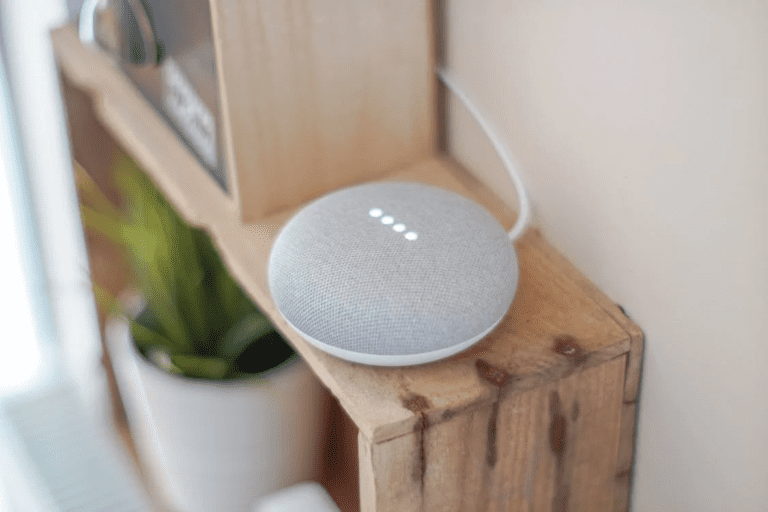As technology continues to advance, it has made its way into every corner of our lives, including our kitchens. From smart appliances to innovative gadgets, the kitchen is becoming increasingly high-tech and efficient. In this blog, we will explore six cutting-edge kitchen technologies that are shaping modern homes and revolutionizing the way we cook, dine, and entertain. These innovations range from intelligent refrigerators that can create shopping lists for you to robotic chefs that can prepare gourmet meals with just a few taps on your smartphone. By incorporating these advancements into our kitchens, we are able to save time, energy, and resources while also enhancing the overall cooking experience. Join us as we delve into the world of smart kitchens and discover how these technologies are transforming the heart of the home into a space that is both functional and futuristic. 1. The Rise of Smart Appliances in Modern Kitchens In the fast-paced world we live in, smart appliances are becoming increasingly popular in modern kitchens for their convenience and efficiency. These intelligent devices are equipped with cutting-edge technology that allows them to communicate, interact, and adapt to our needs, making cooking and meal preparation a breeze. One of the most notable advancements in smart appliances is the integration of voice control features. Imagine being able to preheat your oven, adjust cooking settings on your stove, or even check the inventory in your refrigerator with simple voice commands. This hands-free approach not only saves time but also adds a touch of luxury to your kitchen experience. Additionally, smart appliances offer remote monitoring capabilities through smartphone apps. You can now keep track of your grocery stock, receive notifications when your food is ready, or even troubleshoot any issues with your devices from anywhere in the house or even while you’re away from home. 2. Connected Cooking Devices for Seamless Meal Preparation In the modern kitchen, connected cooking devices are taking center stage, offering a new level of convenience and precision in meal preparation. From Instant Pots to mini air fryers to coffee makers, these smart gadgets can be controlled remotely through smartphone apps, allowing you to monitor and adjust cooking settings with ease. Imagine being able to start dinner prep on your Instant Pot while you’re still at work, ensuring a hot meal is ready as soon as you walk through the door. Or setting your air fryer to cook your favorite snacks with just a simple tap on your phone. With these devices, you have full control over the cooking process from anywhere, making mealtime stress-free and efficient. Furthermore, connected cooking devices often come with preset recipes and cooking programs that guide you through each step, ensuring consistent results every time. Whether you’re a seasoned chef or a novice cook, these gadgets take the guesswork out of meal prep and empower you to create delicious dishes with confidence. 3. Energy-Efficient Solutions for a Greener Kitchen As we strive towards a more sustainable lifestyle, energy-efficient solutions have become a key focus in modern kitchens. Technologies such as induction cooktops, energy-efficient refrigerators, and sensor-based lighting systems are revolutionizing the way we consume energy while cooking and dining. Induction cooktops use electromagnetic technology to heat pots and pans directly, reducing energy waste compared to traditional gas or electric stoves. Energy-efficient refrigerators utilize advanced insulation and compressor technology to minimize electricity consumption without compromising on cooling performance. Sensor-based lighting systems automatically adjust brightness levels based on natural light conditions, optimizing energy usage throughout the day. By incorporating these energy-efficient solutions into your kitchen design, you can reduce your carbon footprint and contribute to a greener, more sustainable home environment. Join the movement towards eco-friendly living with these innovative technologies at your fingertips. 4. Health-Conscious Kitchen Gadgets Promoting Wellness In today’s health-conscious world, kitchen gadgets are playing a vital role in promoting wellness and aiding in healthy living. Smart scales, nutrition trackers, and water purifiers are just a few examples of innovative technologies that help individuals make informed choices about their diet and hydration levels. Smart scales not only measure ingredients accurately but also provide nutritional information and track your food consumption to help you stay on top of your dietary goals. Nutrition trackers analyze the nutritional content of your meals, offering insights into calorie intake, macronutrient balance, and vitamin levels for a well-rounded diet. Water purifiers remove impurities from tap water, ensuring that you stay hydrated with clean drinking water throughout the day. These gadgets empower users to make healthier choices in the kitchen by providing real-time data on their food intake and hydration status. By incorporating health-conscious kitchen gadgets into your daily routine, you can take control of your well-being and cultivate a healthier lifestyle for yourself and your family. Embrace these technologies as tools for achieving optimal health and wellness in the heart of your home. 5. Effortless Cooking with Automated Meal Prep Robotic chefs and meal-prep devices are transforming kitchen routines, offering convenience, efficiency, and precision in meal preparation – including the creation of ready-made ketogenic dishes. Imagine having a personal sous chef that not only chops ingredients but also assists in cooking perfect keto dishes and tidying up afterward with minimal effort. Robotic chefs use advanced technology to mimic professional techniques while ensuring consistent and high-quality results. Meal-prep devices like food processors and multi-functional cookers simplify the prep process for keto recipes by effortlessly cutting, blending, or sautéing ingredients at the press of a button. By incorporating automated meal prep tools into your kitchen and exploring ketogenic recipes, you can streamline cooking while enjoying flavorful low-carb meals without the usual time-consuming tasks. Embrace these innovations to enhance your culinary experience and effortlessly maintain a keto-friendly diet. 6. Sustainable Kitchen Technologies for Eco-Friendly Living Embracing sustainability in the kitchen is easier than ever with innovative technologies that prioritize eco-friendly practices. From composting systems to recycling bins with sensors and water-saving faucets, these solutions are reshaping how we interact with our kitchen spaces while reducing our environmental footprint. Composting systems make







